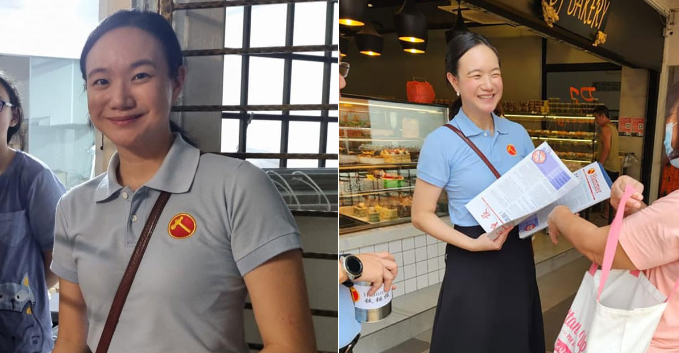Workers’ Party youth wing president, Nicole Seah, recently visited Bedok Food Centre at Block 216 after its reopening, following a closure from Septem
Workers’ Party youth wing president, Nicole Seah, recently visited Bedok Food Centre at Block 216 after its reopening, following a closure from September to late November for repair works. During her visit, she engaged with residents on various topics, including the funding for the refurbishment of hawker centres and a resident’s experience with workplace abuse.
“The hawker centre welcomed back many residents after a three-month renovation, and it was great to see the same long queues for stalls that have been around for decades. The redevelopment and rebuilding of hawker centres are funded by the government when necessary,” Seah explained.
Seah recounted a conversation with a resident who questioned whether the National Environment Agency (NEA), the Town Council, or Members of Parliament (MPs) were responsible for funding the work done at hawker centres. “Repair and redecoration works of hawker centres may be borne fully by NEA or the Town Council. It was puzzling when we heard claims that MPs fund these repairs from their own pockets, and the resident who was told this was equally confused,” she added.
In 2020, Andrew Low, NEA Director for the Hawker Centres Division, addressed similar concerns in response to a media letter, clarifying that “the Government fully funds the building programme of hawker centres, as well as the redevelopment and regular repairs.” Costs for these repairs, typically carried out every five to seven years, are borne by NEA or the respective Town Councils, with no impact on stall rentals.
During her visit, Seah also encountered a resident who shared a troubling experience of workplace abuse by a supervisor. The resident, a low-wage worker, recounted verbal and physical abuse, such as being hit with a mop, but felt powerless to resign due to financial constraints. Though the worker eventually found another job, she declined Seah’s offer to assist with a written appeal to the Ministry of Manpower (MOM) due to fear of potential consequences.
Seah reflected on the need for stronger protections for low-wage workers, who often face a power imbalance in the workforce. “It was a sombre reflection that low-wage workers continue to be vulnerable. There need to be more rights and safeguards in place to ensure their safety and dignity in the workplace,” she said.
In 2019, Leader of the Opposition, Pritam Singh, raised a parliamentary question regarding workplace bullying in Singapore. Then-Minister for Manpower, Josephine Teo, responded, noting that a 2018 MOM survey found that 2.4% of Singapore’s resident labour force had experienced workplace bullying or harassment. She emphasized that Singapore takes a serious stance on the issue, with protections in place under the Protection from Harassment Act and the Penal Code.
Those facing workplace harassment can seek assistance by contacting TAFEP at 6838 0969 or writing to them for advice.



COMMENTS